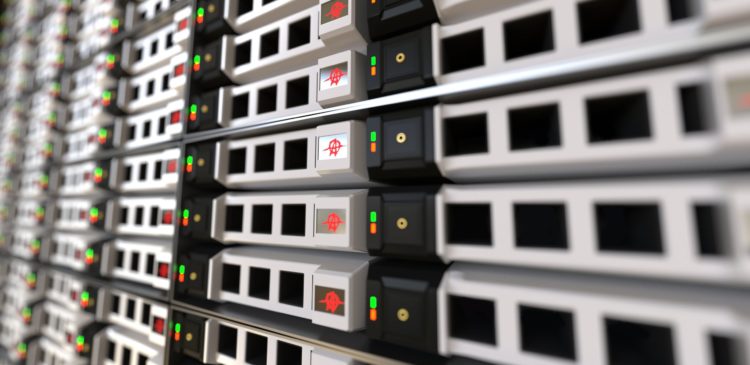"Edge computing represents the next wave of infrastructure modernization," said Dave McCarthy, research director, Edge Strategies at IDC. "The distributed nature of edge computing creates more flexibility in deployment architectures, achieves faster response times to rapidly changing conditions, and addresses many of scalability problems associated with IoT use cases."
But how is this being interpreted in Asia-Pacific (APAC). FutureCIO spoke to of Glen Duncan, associate research director for Datacentre and Enterprise Infrastructure on how edge strategies are evolving in the APAC (excluding Japan per IDC definition) region in 2020 and what things will look like after the COVID-19 pandemic has ceased to become a major influencer of how compute strategies are being deployed.
What is the value of edge technology in the crafting and executing a customer engagement strategy (or fulfilling anticipated customer satisfaction goals)?

Glen Duncan: Many customers today are engaged with technology through mobile devices such as phones and tablets or through the internet-of-things (IoT) sensors at remote or edge devices. Next-generation workloads such augmented reality, machine learning and artificial intelligence require more processing to be done at edge datacentres due to latency limitations of the network.
For example, the complexity and sensitivity of driverless motoring requires significant compute to be carried out in or around the car. In order enhance customer experience in edge environments, enterprises must develop an overall datacentre edge strategy.
Previous IDC surveys indicate that a majority of APAC enterprises don't have an edge strategy. This is problematic because customer engagement and experience can degrade without one.
Of those enterprises with an edge strategy, the strategic factors that are driving their plans to the edge include improved security, content delivery at the edge, data processing at the edge, greater peering traffic at the edge, proximity to point of transaction being captured and richer media experience for the end user.
Enterprises are first concerned with getting their edge points secure first before focusing on the customer experience benefits that can then be achieved. These benefits include faster transaction times, better performance and greater availability/agility.
In it's IDC FutureScape: Worldwide Datacentre 2020 Predictions — APEJ Implications, IDC made the following predictions in relation to datacentres and the edge:
Prediction 1: By 2023, in Asia/Pacific (excluding Japan) (APEJ), more than 30% of the new infrastructure deployed will be in increasingly critical edge locations rather than in corporate datacentres, up from less than 10% today.
Prediction 6: In 2022, 30% of APEJ consumer-facing businesses will deploy and securely operate infrastructure to deliver an optimal digital experience for customers, employees, and smart things in many locations.
When it comes to edge technology, what is preventing organisations from reaping the benefits of such?
Glen Duncan: In the IDC APeJ Datacentre Operational Survey 2020, 65% of respondents reported plans to deploy more IT services at the edge.
However, some enterprises and service providers are being held back from reaping the benefits of edge and associated technologies through the lack of a formal edge strategy. Lack of a targeted and well-formulated strategy can be a major barrier in designing, implementing and deploying edge computing and reaping the associated benefits.
In the 2020 survey, respondents indicated that edge initiatives have been hampered by a range of concerns including ensuring security of data (80%), protecting and securing physical assets and infrastructure (75%), energy efficiency of edge resources (72%), connectivity of critical infrastructure introducing more security risk (70%), ensuring resilience of power and service (69%), keeping track of assets in remote locations (69%), proving value of the edge investment to management team (66%), lack of trained staff on site (64%) and having enough network bandwidth to support 5G (63%).
What should businesses bear in mind when deciding the best technologies/platforms for them to use as part of the edge investment?
Glen Duncan: When thinking about the edge, businesses should ensure that they treat the edge as a logical extension of their core. Edge computing cannot just be treated as a tier "bolted on" to the firm's main infrastructure (aka the core). It must be functionally and logically treated as an extension of the firm's core. A mismatch can lead to downtime and unavailability. Inadequate resources create a mismatch between expected service levels and the infrastructure.
Businesses should also take a multi-pronged "Always On" approach to security. Edge computing changes the way firms view security — both physical and digital. Data collection devices compromise the integrity of the entire business; security can no longer just be about physical access to their datacentre, network access, or securing applications.
Previous IDC surveys indicate significant plans for deployment of edge datacentres on the following: converged infrastructure, cloud networking appliances, hyperconverged appliances and gateway aggregation appliance as well as bespoke/self-built infrastructure.
In the IDC APeJ Datacentre Operational Survey 2020, respondents indicated that they would utilize a range of service providers to deploy edge infrastructure including colocation providers (32.2%) and Telcos (39.2%).





